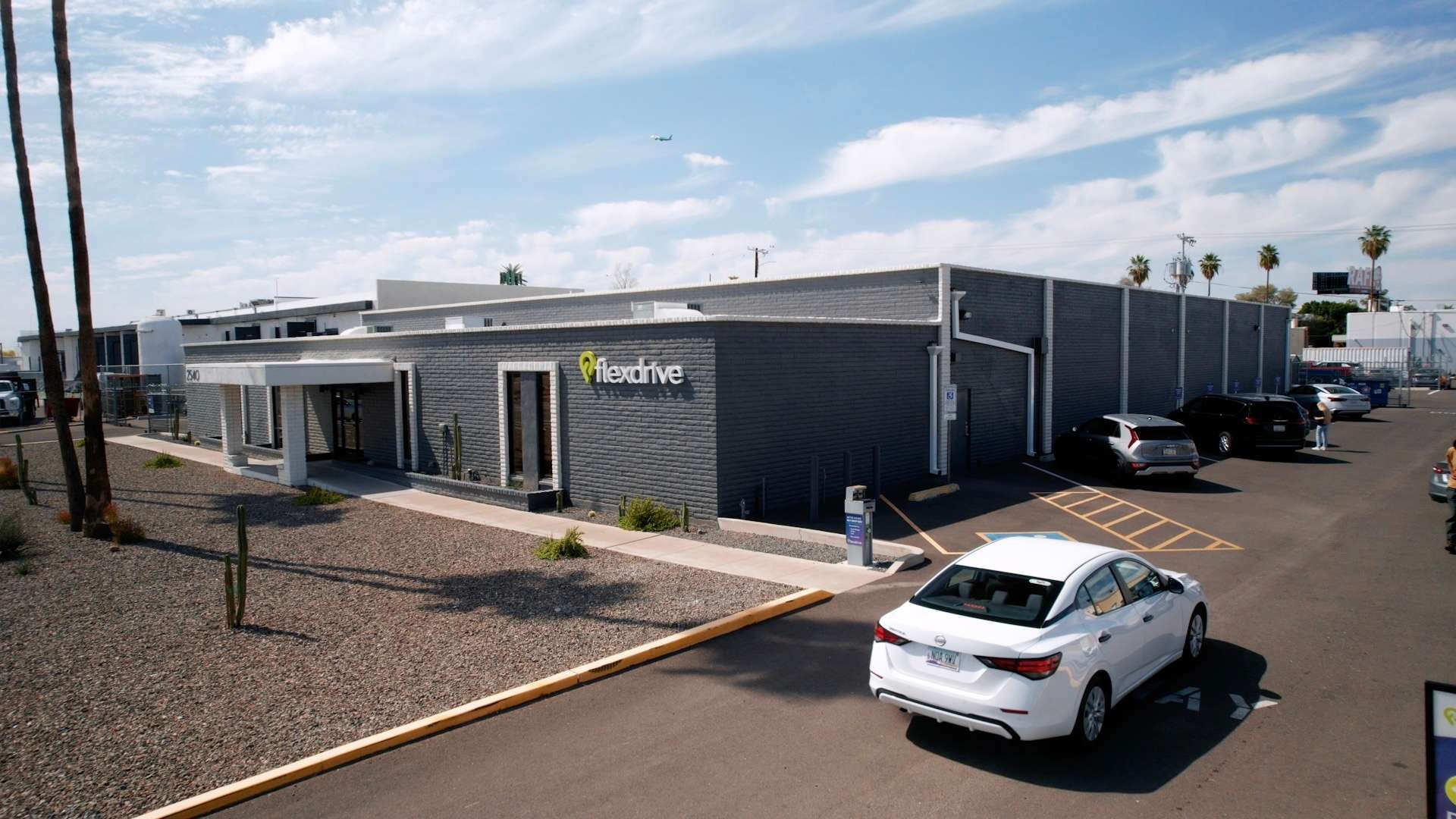
Picture this: You’ve just ordered your first ride in an autonomous vehicle. You’re curious and excited to see what all the fuss is about. You track its location on your rideshare app, counting the minutes until it arrives. And then it shows up — a glistening, clean, futuristic vehicle that looks like it just rolled off the lot, all charged up and ready to go.
This is the vision most of us have for the AV future, and it’s one we at Lyft are excited to deliver.
But what most people don’t think about — and ideally will never have to think about — is all the actions required to make it come to pass. Even AVs can’t care for themselves. They can’t clean themselves, repair themselves, or charge themselves. It turns out that keeping a car in great shape, especially one that’s on the road most of the time, is a full-time job.
That’s where fleet management comes in. For those unfamiliar, fleet management is the job of ensuring every vehicle a company owns is well taken care of — clean, in good repair, safe, and with plenty of fuel (or charge, in the case of an AV) to get wherever it needs to go. Managing a fleet of cars is complicated enough with human drivers involved, but managing a fleet of AVs creates even more challenges. Who cleans the car between trips, or keeps an eye on the tire pressure, or handles any of a hundred things that can go wrong inside a complicated automobile?
This isn’t just a matter of aesthetics. Ensuring that vehicles are well-maintained is key to minimizing breakdowns, accidents, and other potentially dangerous scenarios. And doing it efficiently means reducing costs and minimizing downtime, so the vehicle can be out on the road earning as much as possible. Both of those concerns will become even more important as AVs roll out. Riders need to trust they will be safe in a new experience, and fleet owners need to maximize the return on their (expensive!) assets.
We know fleet management is absolutely critical — that’s why we’ve obsessed over it for years. Our secret weapon? Our independent subsidiary Flexdrive. Through a focused, long-term mindset, relentless innovation, and disciplined execution, Lyft and Flexdrive have become masters of the rideshare fleet management space. Flexdrive has sourced, constructed, and managed service depots, rental sites, and repair centers. It has built strong networks and hiring pipelines to ensure the best operators in the industry are working on its vehicles. It’s spent tens of thousands of coding hours building software perfected for the needs of rideshare. All of this has enabled Flexdrive to grow from a single location in Atlanta with a handful of vehicles to a highly efficient team of 130 managing around 15,000 vehicles across 27 North American locations, helping drivers earn nearly $2 billion since the start of the program.
Flexdrive has created a better experience for drivers and riders alike. By owning the end-to-end customer experience — sourcing and maintaining the vehicles, managing the retail experience, overseeing payments — it and Lyft are able to deliver more consistent service on the Lyft platform, whether for those behind the wheel or sitting in the back seat.
This vertically integrated approach has also unlocked an entirely new level of efficiency not seen elsewhere in the industry. Flexdrive proactively alerts drivers when something needs to be addressed, like low tire pressure or fuel levels, and helps them schedule a convenient time to bring the car in for service. It tracks real-time charge levels for thousands of EVs, ensuring only trips that are within range are suggested, minimizing charging times, and keeping cars on the road. It’s installed geofencing technology, allowing it to respond rapidly any time one of its vehicles enters a service location, maintenance shop, collision center, or impound lot — cutting loss and substantially reducing the time of recovery. Most importantly, it does all this while minimizing downtime and therefore maximizing potential revenue. Indeed, Flexdrive’s utilization rate of 90% is considered industry-leading.
This laser-like focus goes beyond just technology and processes but extends to the team as well. More than a third of Flexdrive’s personnel are current or former drivers with Lyft. These are people like Rodney, the operations lead in Charlotte, who started his journey with the company in 2018 and has led his team through initial launch, significant fleet expansion, and unexpected curveballs like COVID. And his time as a driver — Rodney has given more than 11,000 rides on Lyft — gives him a deep personal connection to the driver experience. This driver-facing perspective paired with fleet expertise helps Flexdrive build better products for its customers.
As we enter the AV era, Flexdrive’s value will become even more obvious — and not just to Lyft. The more AVs become mainstream and fleets grow, the more the unsexy but critical work of fleet management will make the difference between success and failure. In a high-volume, low-margin business, a fleet owner’s ability to drive down costs while maximizing revenue will determine the speed with which this exciting new technology becomes commercially viable.
A day in the life of a Flexdrive-managed AV
Leveraging this experience and these capabilities, Lyft and Flexdrive are able to manage the entire end-to-end AV experience, including vehicle prep each day, demand generation, ongoing tracking and analysis, charging, cleaning, repairs, and more.


Flexdrive isn’t the only fleet management option out there, but it is the only one that’s vertically integrated into an existing rideshare company, enabling it to be particularly attuned to the Lyft platform’s unique needs and opportunities. We think that’s a significant competitive advantage. Otherwise, AV companies have to outsource their fleet management function — sometimes to one supplier, but often to a collection of them — in addition to finding a rideshare partner to handle the customer experience and demand generation. Before you know it, you’re working with three, five, seven different partners — and each of them wants a cut.
That multi-partner model isn’t likely to be as efficient or effective as working with one rideshare partner with a subsidiary that can also handle fleet management. Lyft and Flexdrive minimize the number of companies that need to take a cut from every ride — driving down cost and improving profitability. We can pair the marketplace knowledge of Lyft with the fleet-management expertise of Flexdrive to ensure that vehicles are being serviced at the optimal time — for instance, pulling AVs off the road to charge or perform maintenance when we know demand is lowest. A stand-alone fleet management company won’t have that insight, resulting in lost revenue.
AV companies can also benefit from Flexdrive’s unique scale. Today, Flexdrive vehicles drive more than 550 million miles per year. That creates a serious demand for maintenance, tires, cleaning, glass replacement, and more — so much so that Flexdrive is able to negotiate particularly favorable terms from its service partners. Indeed, in most markets, vendors come to Flexdrive’s locations to service their vehicles. That means cars are repaired faster and vehicles don’t need to travel as far, all with minimal infrastructure.
Fleet owners who deploy AVs on the Lyft platform will benefit hugely from these investments. And they aren’t the only ones. Ultimately, we expect this will benefit individual AV owners too. We envision a time in the future when every AV rolls off the lot “Lyft Ready” — allowing anyone to join the platform with the push of a button. That vision will only become reality if owners can trust that their car will be well cared for while it’s servicing riders.
Nobody wants their AV to return home trashed after a long day on the road. With Flexdrive, AV owners can have confidence that the fleet management team will ensure that their “Lyft Ready” car returns home clean, fully charged, and ready for the next trip.
Fleet management is the often-overlooked linchpin of the AV rideshare industry. Without it, riders won’t have a great experience, and AV companies and fleet owners won’t be able to build sustainable businesses. Fortunately, Lyft already has the unique tools, expertise, and business model with Flexdrive to address this urgent need. Flexdrive’s fleet management capabilities put us in a great position, but more importantly, they’ll make the AV future a much better reality for riders, fleet operators, and individual AV owners for the long term.
Forward-Looking Statements
Certain statements contained in this announcement are “forward-looking statements” about Lyft within the meaning of the securities laws, including statements about Lyft and its independent subsidiary Flexdrive’s value proposition, fleet management capabilities, and expected outcomes, as well as their future benefits and impacts. Such statements, which are not of historical fact, involve estimates, assumptions, judgments, and uncertainties. There are a number of factors that could cause actual results or outcomes to differ materially from those addressed in the forward-looking statements. Such factors are detailed in Lyft’s filings with the Securities and Exchange Commission. Lyft does not undertake an obligation to update its forward-looking statements to reflect future events, except as required by applicable law.

